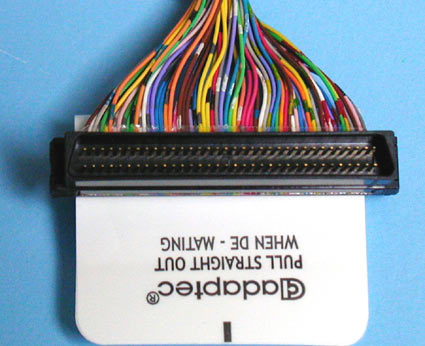RAIDCore Unleashes SATA to Take Out SCSI
Extended RAID Modes/Nested RAID
In addition, there are many conceivable combinations in which RAID modes can be configured. RAID 50, for example, uses two RAID 5 arrays to form a RAID 0. Let's do the math: RAID 50 with 6 or 8 hard drives is better than RAID 5, as in each RAID 0 arm a drive can fail - even if this does lower performance considerably. But remember, the capacity of two whole hard drives is taken up with parity storage.
More common is without doubt RAID 01, which mirrors two RAID 0 stripes in one superordinate RAID 1. For this you need four hard drives, which is not usual in the professional segment.
Finer Points On RAID
For drive failures there is the option with professional controllers to enable a so-called hot spare: This consists of an additional hard drive of the same manufacturing type which serves as a backup within the array should a drive fail. Hot spares should not be confused with global spares, which work with any array, or with dedicated spares, which are allocated to specific arrays.
One important detail with regard to the creation of a complex RAID array is the fact that you have to run initialization. Depending on the number of hard drives used and their combined capacity, this really can take many hours. Good controllers provide the option of carrying out this initialization in the background so that the newly created array can be used immediately - but performance is significantly reduced.
It is precisely when it comes to SCSI controllers where you have to think very carefully beforehand about exactly how the RAID array should be configured. The high-class devices have two channels that each enable the usual bandwidth of 320 MB/s and are seamlessly realized in the system by means of PCI-X with 100 or even 133 MHz. If so many hard drives are used that the bandwidth of one channel is in danger of being overstretched, both channels are supposed to be used. The array you want can in most cases be created regardless of connection to the drives, and what is more, the option exists from six hard drives or more to create a RAID 50.
With SATA RAID this limitation does not exist. Each drive works in its own channel at a rate of up to 150 MB/s.
In the case of server environments, a high level of RAID controller flexibility is required. An important pre-condition for this is the possibility of hooking up or detaching drives in operation. In the case of Ultra320 SCSI, hot Sswap changing racks are required; ideally you should go for a hard drive with an 80 pole SCA interface. SATA can accommodate hot swapping already, so that in principle you don't even need a hot swap case if you're using SATA power connectors. But be careful with conventional power connectors: They have such a high mechanical tolerance that you can't be sure which contacts are closed first.
Get Tom's Hardware's best news and in-depth reviews, straight to your inbox.
With this equipment you should be able to alter or extend a RAID array without having to switch off the computer or reboot it. The buzzwords here are RAID level migration, that means alteration of the RAID configuration during operation, and online capacity expansion, where additional hard drives are integrated into the RAID array without interruption.
To administrate a RAID controller, software tools are available from the manufacturers. These tools enable monitoring and configuration of the controller in order to enable in turn the features we have just described. Another widespread approach is the installation of a service which functions as a web server and enables remote configuration of the controller via a network. This is not, however, a classic RAID feature, but simply the blood and sweat of clever programmers as an interface must be in place to which each management software application is linked.
A professional RAID system normally consists of SCSI components. The illustration shows a 68 pole wide SCSI connector complete with rounded cable from Adaptec.
Current page: Extended RAID Modes/Nested RAID
Prev Page Fundamentals: RAID Modes Next Page Finer Points On RAID Controllers
Patrick Schmid was the editor-in-chief for Tom's Hardware from 2005 to 2006. He wrote numerous articles on a wide range of hardware topics, including storage, CPUs, and system builds.
